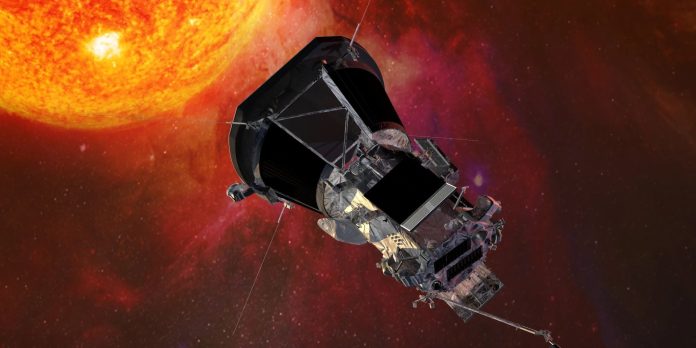NASA Parker solar probe entered the history of astronautics, becoming the first apparatus to approach the sun at a record distance and set a new record of flight speed in space. Parker made a historical rapprochement with our star, approaching the sun at a distance of only 6 million 100 thousand kilometers - less than 1/10 distance between the sun and Mercury. At this point, he developed an incredible speed of 692 thousand kilometers per hour, becoming the fastest spacecraft in history.
This achievement was the culmination of a mission, the purpose of which is to study the sun and to solve many of its secrets, such as the mystery of high temperature of the crown. But even more impressive is the fact that Parker not only survived this dangerous and extremely hot passage, but also continues its mission. One of the main problems faced by the probe was the extreme temperature in proximity to the sun. The probe heat screen is able to withstand temperatures up to 1370 degrees Celsius, which allowed him to survive the rapprochement with the sun. At the time of flight, the temperature in the nearest part of the crown, through which the apparatus flew, reached 980 degrees Celsius. At the same time, the temperature on the surface of the sun is much higher - more than 5500 degrees Celsius. It was with this protective screen that the probe was able to withstand extreme conditions and continue its mission. NASA scientists hoped that the probe would survive after such a close span, and fortunately, they were confirmed that Parker not only remained whole but also in good condition. The mission of the probe is aimed at solving one of the main questions of astrophysics - why the temperature of the crown of the sun, the outer layer of the atmosphere, is much higher than the temperature of its surface. The data that the probe collects during their flights through the crown will help scientists get new ideas about how processes occur in the solar atmosphere.
The probe not only collects important data about the sun, but also transmits invaluable images and indicators to the ground. Over the following months and years, it will continue to approach the sun, performing several planned rapprochement to get even more scientific information. The first data from Parker is expected in January 2025, when it will go away for a safe distance. The Parker probe was launched in 2018, and its main task is to study the solar wind, the crown and the star itself. At the moment, the mission continues, and a few more close aisles of the probe to the sun are pre -planned. The Parker mission will last six years and should end in 2024.
Thanks to the records set by the probe, we take a huge step forward in our understanding of the sun and the cosmic processes that occur in its atmosphere.


